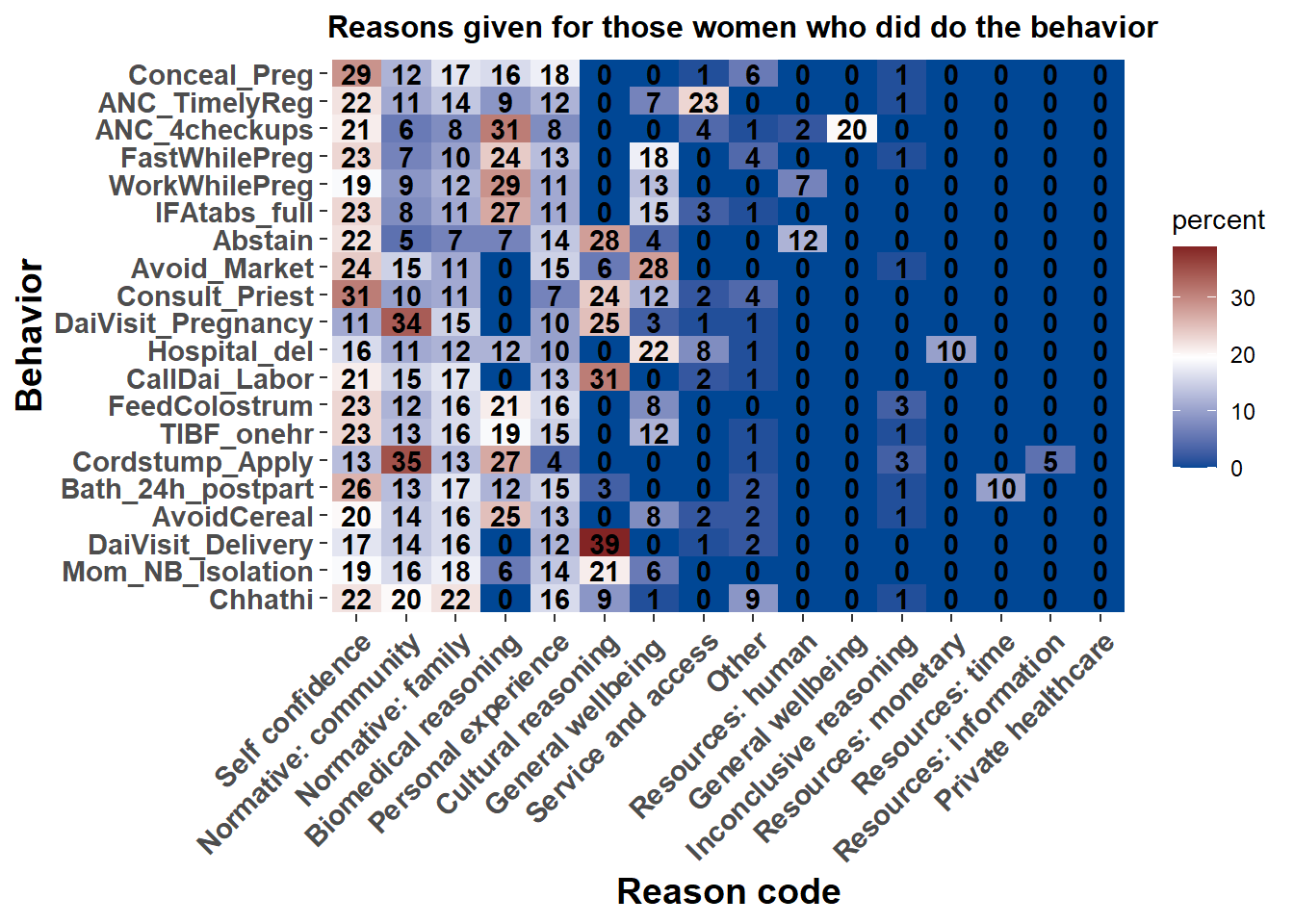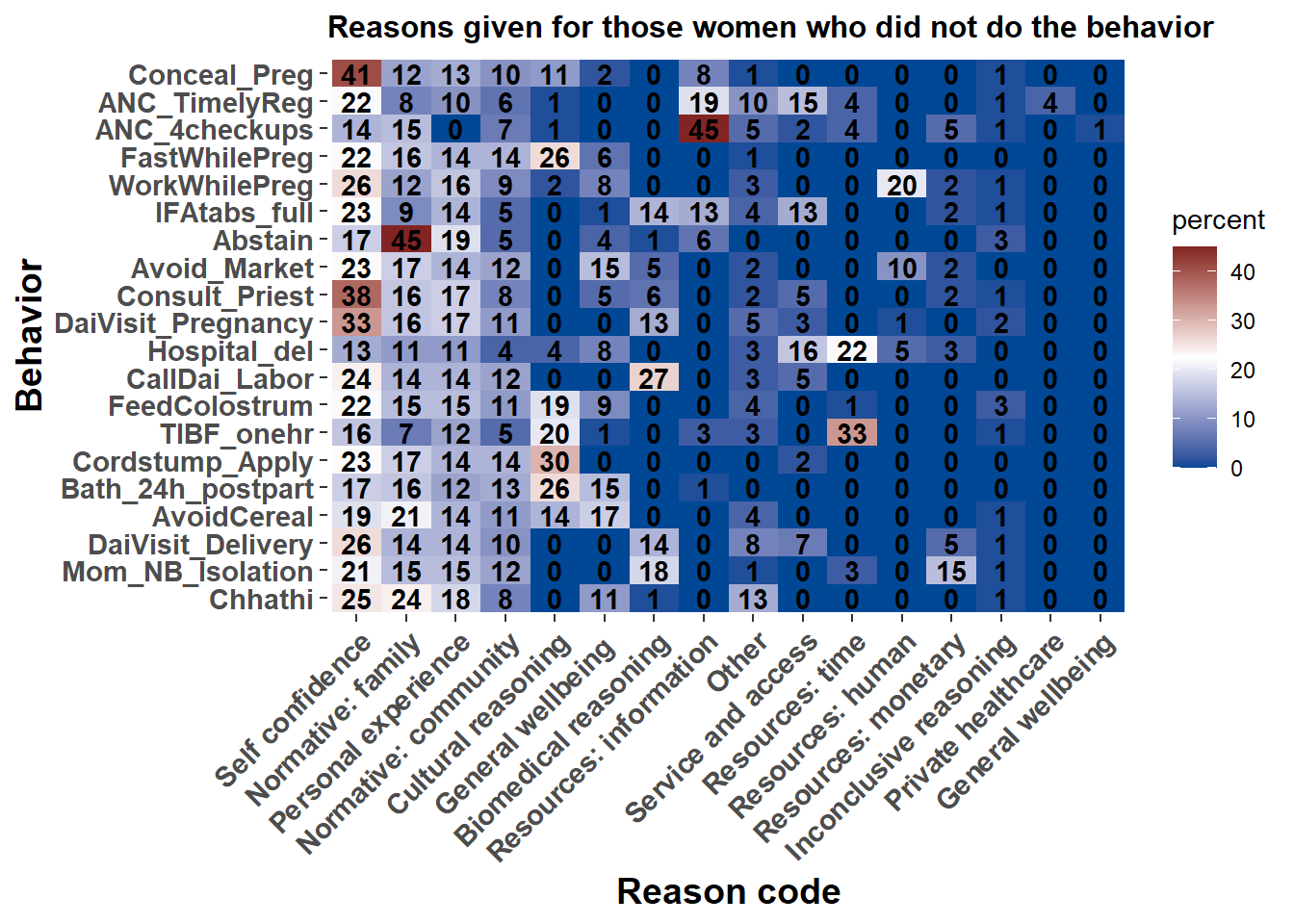8.7 Reasoning
As described at the start of this Chapter, the follow-up questions for each behavior include asking about the influencer and about the reason for doing or not doing the behavior. We have just analyzed the influencer data and here we consider the data about reasons.
The ‘reasons’ data is much more varied. Unlike the responses for influencers, the options for the questions about reasoning vary from question to question. The way we have used the reason data thus far is with targeted queries. For instance, in Table (8.8), one can subset the reasons provided based on the behavior of interest or if the answer was ‘yes’ or ‘no.’ One can search this table to see which reasons were commonly associated with each behavior, subset by the response of having done the recommended behavior (Qvalue = 1) or having not done it (Qvalue = 0).
This can be handy for contrasting the kinds of reasoning associated with doing or not doing a behavior.
Table 8.8: Searchable table of reasons for each behavior and influencer
In order to have an analysis that is more parallel in fashion to the influencer analysis above, and to aid in finding emergent patterns in the types of reasoning used, we also coded the responses into a common set of general types of reasoning.
The categories used were:| x |
|---|
| Biomedical reasoning |
| Cultural reasoning |
| General wellbeing |
| General wellbeing |
| Inconclusive reasoning |
| Normative: community |
| Normative: family |
| Other |
| Personal experience |
| Private healthcare |
| Resources: human |
| Resources: information |
| Resources: monetary |
| Resources: time |
| Self confidence |
| Service and access |
An overview of this coding is in the following table:
The following three heatmaps show the


